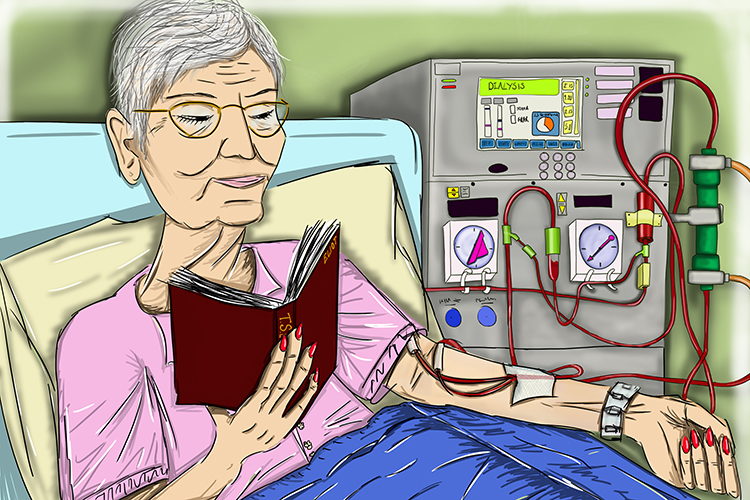How haemodialysis works
‘Dirty’ blood – containing lots of urea – is taken from a blood vessel, usually in the arm.

Dialysate
The blood is pumped into the machine, which contains the dialysate. The dialysate contains a number of substances, including glucose and salts (electrolytes), which the dialysis process will transfer into the blood if current levels are low. If current levels of glucose and salts (electrolytes) in the blood are high, then the transfer will work the opposite way, from blood to dialysate, until the levels are ideal in the blood.
Membrane
The dialysate is separated from the blood flow by a partially permeable membrane, a kind of filter that allows smaller particles to pass through, but stops bigger ones from entering. This means that blood cells, which are comparatively large, stay in the blood while urea, salts, water and glucose can be filtered out of or into the blood, according to the body’s current needs.
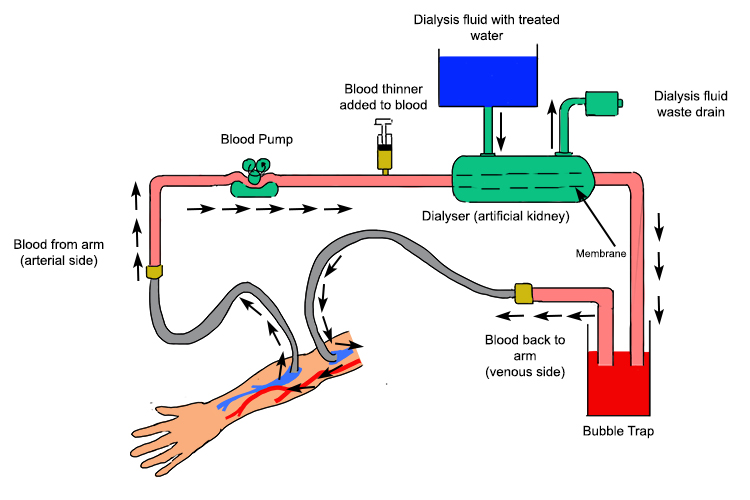
This diagram shows the flow of blood in haemodialysis, from the arm, through the dialysis machine and back to the arm.
Concentration gradient
The blood flows in the opposite direction to the dialysate, allowing exchange to occur between the two, via the membrane (filter), where a concentration gradient exists.
.jpg)
Urea
Initially, the dialysate contains no urea, so there is a large concentration gradient, which means that urea in the blood moves readily across the membrane into the dialysis fluid, by diffusion.
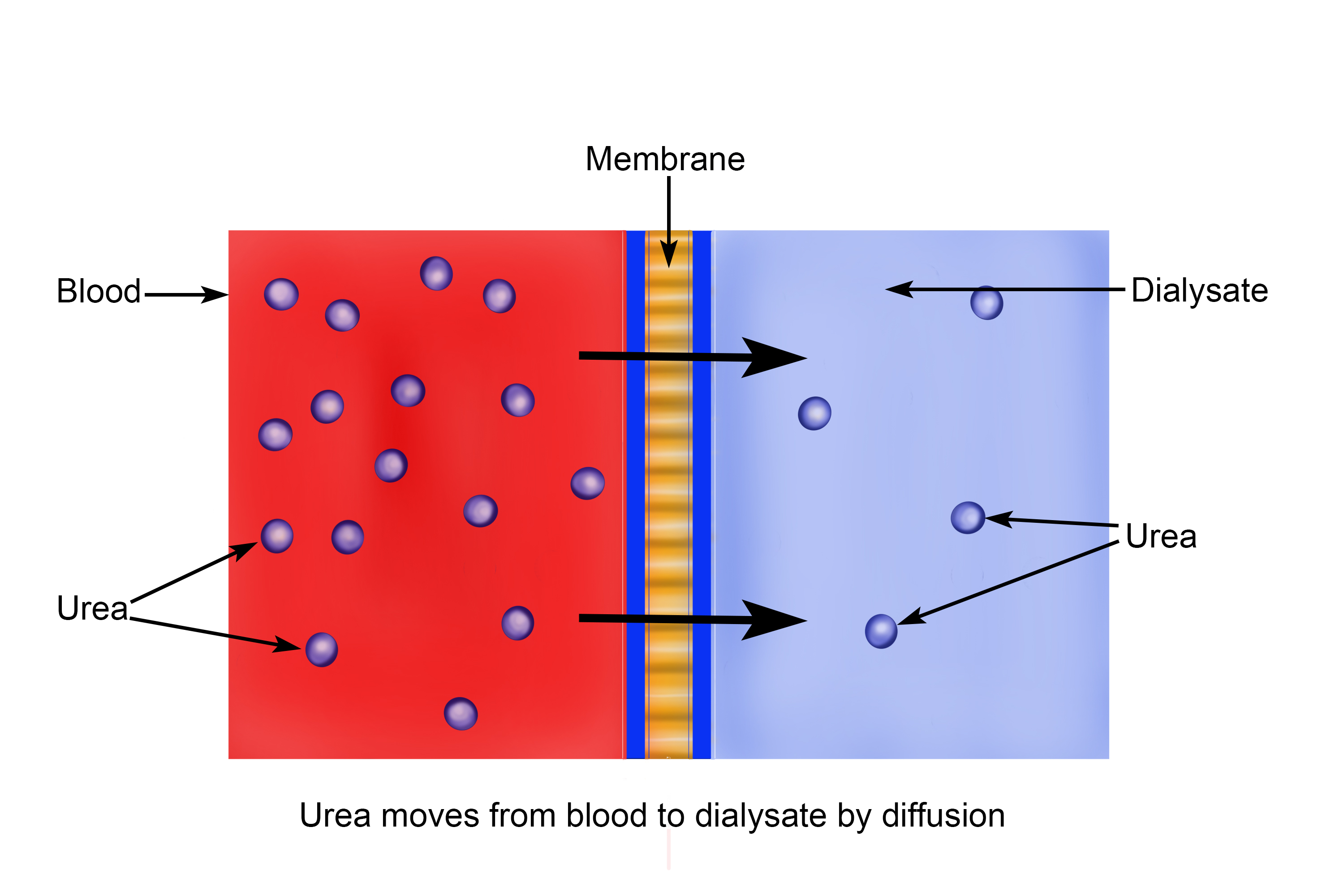
Glucose concentration (also known as blood sugar balance)
The dialysate contains a glucose concentration equal to a normal blood sugar level, which prevents movement of glucose across the membrane unless the patient’s blood-sugar level is too high or too low.
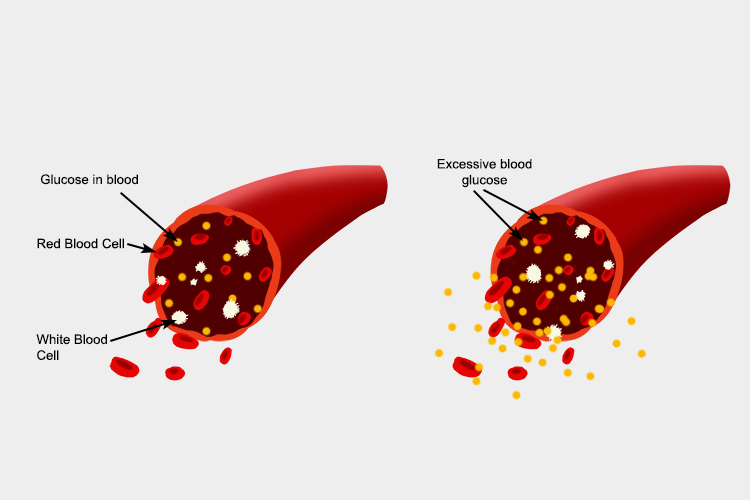
Salts (electrolytes)
The dialysate also contains a salts concentration, or balance, similar to the ideal blood/salt balance, so movement of salts across the membrane only occurs where there is an imbalance. These salts are vital for the transmission of electrical signals in our bodies.
If the patient’s blood is too low in salts, they will diffuse from the dialysis fluid into the blood, restoring the ideal level in the blood. If the patient’s blood is too high in salts, the excess salts will diffuse from the blood to the dialysis fluid.
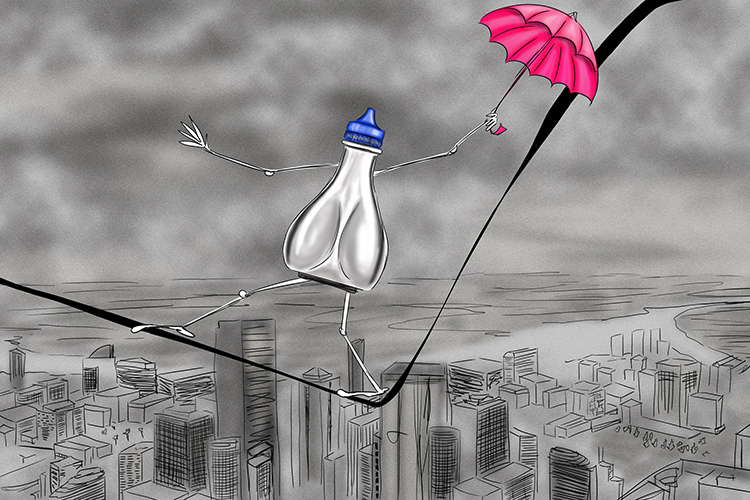
The right balance of salts is essential for transmission of electrical signals throughout our nervous systems.
How long does haemodialysis take?
Haemodialysis requires highly specialised and expensive machinery. The patient must be connected to this machinery 2-3 times a week for periods of between 4 and 6 hours at a time.
